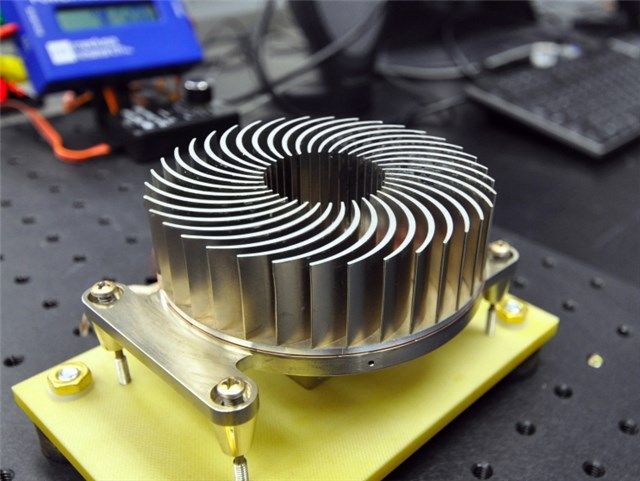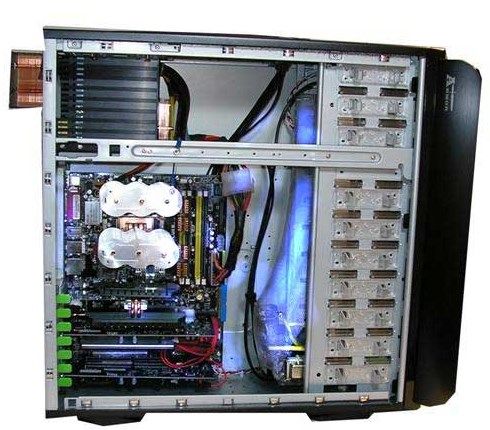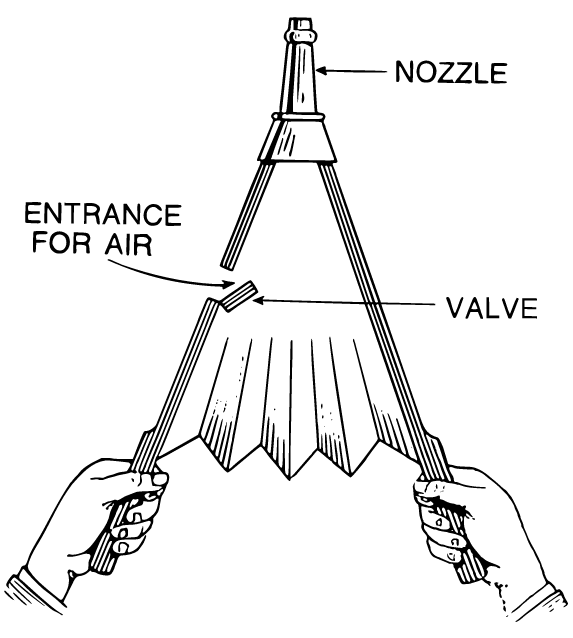New PC cooling technologies use almost no energy and employ methods 50 times more efficient than conventional designs. Some come in a form factor as thin as cardboard. Others look like a hockey-puck. Unfortunately, of the many technologies promised by the Internet, few actually come to fruition. We call it "vaporware" when gadgets fail to materialize.
While hitting CPU speeds over 5 GHz on air may soon exist, right now these technologies don't appear anywhere, outside a laboratory. For whatever reason, the following three technologies failed to make it to market. Although their manufacturers produced them in prototype form, they never entered mass production.
Sandia's Supercooler
The most interesting, and radical, out of the bladeless coolers hails from the US government-backed Sandia Labs. The Sandia fan made quite an impression on PC enthusiasts by cramming 50-times greater cooling ability into a hockey-puck sized heat sink. It achieves its power based on an extremely unusual phenomenon: Boundary layer effect.
The effect is difficult to explain. Rather than incorporating a copper or metal heat sink, it uses air. To be precise, Sandia's cooler uses a vortex of air. If you examine the cooler's central cooling mechanism, it appears to be a metal, serrated disk. This disk spins, creating a miniature vortex directly above the CPU's integrated heat-spreader, where all the heat issues from. The vortex provides more efficient cooling than even the biggest of consumer heat sinks. This device ironically cools more efficiently than direct metal-to-metal contact by using air.
Sandia's invention makes almost no noise, takes up hardly any space and cools more efficiently than the best heat sinks on today's market. An anonymous company even purchased the licensing rights more than a year ago, but unfortunately, never produced any device. It's possible that either the technology somehow proved unfeasible or it was shelved pending additional refinement.
You can watch video of Sandia's cooler in action below:
http://www.youtube.com/watch?v=JWQZNXEKkaU
Ionic Wind Cooler
Ionic wind uses no moving parts to generate airflow for central processing units. It's also completely silent and capable of cooling even large wattage CPUs. Anyone can build their own cooler, as well, given that it uses off-the-shelf parts. One blogger, Jared Bouck, even posted a guide on how to build your own iconic wind generator.
The ionic wind effect remains one of the most fascinating cooling technologies ever made. It employs two charged, metal plates. One plate receives a negative electrical charge and the other a positive. This causes charged air particles to move from one direction to the other, generating a gentle, but powerful, breeze.
You can watch video of the effect below:
http://www.youtube.com/watch?v=k4HOBQJE4Pk
This cooling method is useful in devices where not much space is available, like laptops, or where silence is required, such as HTPCs. It also provides the same effect as an air ionizer: the ionized particles will remove pollutants from the air.
There's a huge number of patents focusing on the use of ionic wind as a cooling agent. Apple patented a large number of fanless technologies to cool their laptops — ionic wind generators remain among the most ideal solutions for silently cooling aesthetically clean designs. However, Apple failed to implement any such method in any product. It's a shame, because some developers found that ionic jets can cool devices 30% better, with half as much energy consumption.
On the downside, there's been a number of technical limitations facing ionic wind devices. Oxidation of the charged plate remains the biggest impediment to production. Essentially, when a charge is run through a metal plate, the plate tends to bond with oxygen particles more readily. Unfortunately, ionic wind coolers will lose efficacy over time, as its plates oxidize.
Piezo Bellows-Style Cooling
Piezo cooling methods utilize a bellows-type cooling device, in place of a fan. Instead of using axial rotation combined with an airfoil to generate airflow, a bellows blows air. The device can fit into extremely tiny places, oftentimes not that much thicker than a a few pieces of paper.
It also requires virtually no energy to run, while cooling near what a regular fan can cool. The technology can also scale dramatically, with larger devices cooling substantially greater volumes of heat.
http://www.youtube.com/watch?v=Hm5fXj-hUpk
One of the researchers for General Electric's dual jet piezo cooler did an interview on Reddit. GE's dual jet piezo unit can cool up to 18 watts processors with a relatively low sound generation at 20 dBA.
Conclusion
None of the three technologies presented within this article, at present, made it into markets. While you can make your own ionic wind cooler or eco-friendly PC, you can't buy one with these technologies presented in this article. However, there are alternatives. For example, you can build a fanless PC of your own (although it may not work properly). Or, you can silence a traditionally-cooled laptop.
Anyone know of any other radical cooling technologies? Please share in the comments!




